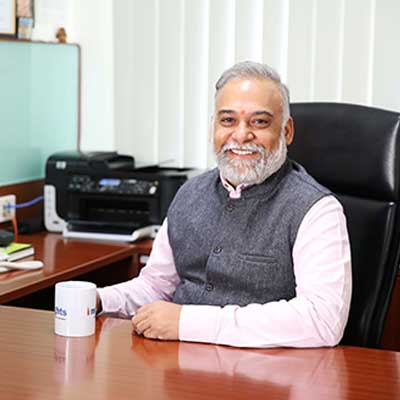Employee Health & Wellness in Times of COVID -19 | Dr (HC) Guruvayurappan PV | SVP – Human Resources | Omega Healthcare Management Services Pvt Ltd
 The climate created by this pandemic is one of stress, anxiety and uncertainty, having profound impact on the well-being of the workforce, irrespective of the industry, designation and nature of work. While COVID-19 may have forced a majority of the world to Work from Home, it is still an unfamiliar territory for a large part of the community. Balancing work and personal life for these set of people is certainly not easy. While managing the larger business strategies, employee well-being has now become the primary focus for several leaders.
The climate created by this pandemic is one of stress, anxiety and uncertainty, having profound impact on the well-being of the workforce, irrespective of the industry, designation and nature of work. While COVID-19 may have forced a majority of the world to Work from Home, it is still an unfamiliar territory for a large part of the community. Balancing work and personal life for these set of people is certainly not easy. While managing the larger business strategies, employee well-being has now become the primary focus for several leaders.
Effectively supporting the health and well-being of our workforce in these times of pandemic requires a more holistic approach, over and above what has been in practice for these many years. These approaches have to be devised while keeping in mind several psychosocial factors that influence this new work mode. Here are some key elements to give importance to:
- Communicate: Keep the workforce well-informed of both the COVID-19 situation and the overall organization performance, including possible future plans. Keep all channels of communication open, facilitating conversation between the leaders and the rest of the organization too. The more 2-way communication, the healthier an organization. Communicating more on employee wellness and how it matters to the organization can be a soothing balm in the present situation.
- Stay connected: Use all means possible to stay connected with your workforce and make sure no one is left behind. Encourage managers to connect with their teams more often than they do, from a space of empathy and compassion. Consider establishing a central contact point for employees. Develop in-house channels and hubs to respond promptly to employee questions and concerns.
- Routine check-ins: There are many people who work in isolation locked up in their tiny spaces, far away from their families and loved ones. It is essential for organizations to keep a track of such individuals and do a routine check-in with them about their overall wellness. A simple hello or how are you can go a long way in boosting their overall health and well-being. Connecting virtually with considerable face time can be comforting for them.
- Ownership and accountability: Trust your people and empower them with a sense of ownership and accountability. Help them translate this not just to their work but their personal well-being too. Encourage them to draw up plans for their daily physical and overall well-being as well. This can help bring about a greater sense of resilience and boost productivity.
- Motivate and engage: The art of motivating and engaging employees just got a lot trickier with the current pandemic, demanding more innovative and creative ways, capable of delivering good employee experience virtually. Device competitive and creative team-based activities to reach a wider audience. Encourage leaders to participate in such activities. Also, create sessions where leaders can interact remotely on matters other than work. Their increased presence can bring about a sea of change in the overall wellness of the organization.
- Futuristic outlook: To maintain a positive outlook and plan ahead for the future as much as we can, has always helped in times of crisis. Support your workforce to upskill and explore opportunities to work across teams, where possible. Focusing on their career will help them in turn to stay focused and perform better.Wellness can no longer just be an agenda and duty of the HR department. We may not have all the answers in hand but it is essential, as leaders, to be available for our people and address their fears, comfort and support them about their personal issues and try answering all their questions. This pandemic has presented us with an opportunity to really connect with our people and get to know them better. It is people, and not workers, who are the building blocks of an organization. The wellness of an organization is after all dependent on the wellness of its people.


